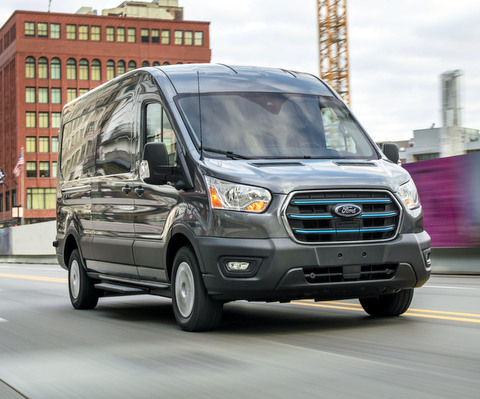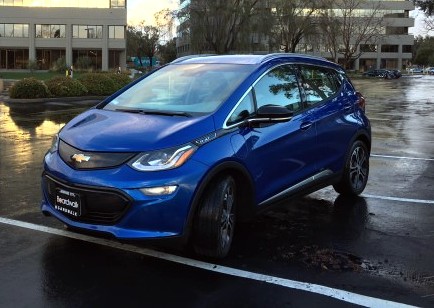Key Considerations for Electrifying Your Vehicle Program
The Inflation Reduction Act of 2022 is the federal government’s largest investment in clean energy and includes substantial incentives aimed to accelerate electric vehicle adoption in America. While many of the legislation’s provisions–such as the new and modified tax credits–encourage individual consumers to purchase a new or used electric vehicle, these measures also have the potential to benefit companies that make a similar move on a larger scale. The signing of the nation’s most significant climate bill into law has created a unique opportunity for business leaders to maximize their sustainability investments, as well as a sense of urgency for organizations that have long considered alternatives to gas- and diesel-powered fleets to act.
There are several factors that influence an organization’s decision to transition its traditional, internal combustion fleet to a vehicle program that supports corporate sustainability initiatives. Let’s explore the ways a company can best position itself for long-term financial, operational, and environmental, social and governance (ESG) success by electrifying its vehicle program.

Reducing Organizational Carbon Emissions
In response to the rapidly evolving U.S. emissions landscape and upswell of consumers concerned about how their decisions affect the environment, businesses have established ambitious sustainability goals. While setting these targets–such as becoming carbon neutral by 2030–can motivate organizations to reevaluate their business decisions, missing these marks can result in a greater negative impact on the environment, diminished public perception and increased pressure from stakeholders, ranging from activists and communities to employees and customers. Businesses launching sustainability initiatives should start by understanding and quantifying the carbon footprint of their vehicle programs, as it is most often the most significant contributor to the carbon emissions of a business line.
By phasing out the existing vehicles and replacing them with electric or plug-in hybrid alternatives, organizations will lower their emissions while simultaneously making themselves more attractive to prospective and current customers, investors and employees. Furthermore, as the sustainability movement continues to grow beyond consumers and to the highest levels of government, business leaders can support ongoing climate measures set forth by the White House and the U.S. Securities and Exchange Commission. The Biden administration has expressed its intentions of halving economy-wide greenhouse gas emissions by 2030 while the SEC has proposed a requirement that public companies disclose climate-related risks, financial metrics and greenhouse gas emissions in their filings.
Reimbursing Employees for the Business Use of their Electric Vehicles
Employers who have struggled with limited vehicle inventory or chose to shed corporate assets to maintain organizational agility are now reimbursing their workers for the business use of personal vehicles. This reduces the overhead costs for business leaders and provides their employees with the flexibility and comfort of driving their preferred vehicle. The consumer tax credits in the Inflation Reduction Act are applied at the point of sale, making it more appealing than ever for an individual to purchase an electric vehicle (EV) of their own by lowering the upfront financial obligation and recurring monthly payment, rather than reducing a tax bill months later. These incentives include a $7,500 tax credit for new electric vehicles and $4,000 for used models, replacing the existing benefits that only applied to new EVs.

Businesses committed to supporting electric vehicle adoption within their organization can create internal incentives, such as providing cash rebates for qualifying employees and electric vehicles, because they will be financially offset by the lower costs of reimbursement. By supporting a transition from gas to electric among employees who drive their personal vehicles for work, companies can not only empower their workers to make a positive impact on the environment in their personal and professional lives, but this can reduce operational costs of driving the vehicle, and therefore reimbursement costs. The sustained volatility in the fuel markets drove the national average for a gallon of regular gasoline to an all-time high of more than $5 this summer, as the cost of a barrel of oil nearly doubled year-over-year. This led to a mid-year increase to the IRS mileage standard for the first time in more than a decade. By shifting the energy source from gasoline to electricity, drivers and their employers will lower their expenses for fuel by more than $2,000 per year.
Understanding Which Electric Vehicles Qualify for the Subsidies
There are several qualifiers associated with the new tax credits for both new and used “clean cars” in the Inflation Reduction Act. It is critically important for business leaders to understand how the existing federal tax credits for electric vehicles have changed and the timeline for the implementation of updated policies. The law has created an adjustment period where some rules have immediately taken effect, while a majority of the benefits will be phased in after December 31, 2022. The pre-existing federal tax credit on electric vehicles, which offers $2,500 to $7,500 in credit for vehicles with a battery capacity of at least 5 kilowatt-hours, starts to phase out after the manufacturers’ first 200,000 qualifying electric vehicles have been purchased and will expire in 2023. Starting January 1, consumers can receive up to $7,500 no matter how many cars have been sold, meaning vehicles manufactured by Tesla, GM and Toyota will once again qualify for the consumer subsidy if they meet all of the other qualifications.
Companies interested in advancing sustainability within their organization should know the details of these caveats to identify ways that incentivize their driving employees to reduce their carbon emissions. For example, there are currently no income requirements for who can qualify for the tax credits, but two main consumer restrictions will be introduced in 2023. First, the buyer must have a gross income less than or equal to $150,000 if they are a single filer, $300,000 for jointly filing married couples and $225,000 for those filing as head of household. There is also a new limit on the final price of the qualifying electric vehicle specific to the model. For new vehicles to qualify, the MSRP must be below $55,000 for sedans and $80,000 for vans, trucks and SUVs.
As business leaders continue to identify opportunities to advance sustainability initiatives and reduce their company’s carbon footprint, lowering their emissions should be a top priority. Transportation, which includes corporate vehicle programs that rely on petroleum-based fuel, continues to be the leading source of these greenhouse gases. Organizations can make an immediate impact by reevaluating their existing programs and transitioning to electric vehicles or plug-in hybrids.

3 thoughts on “News: IRA Aims to Accelerate Fleet Electrification”